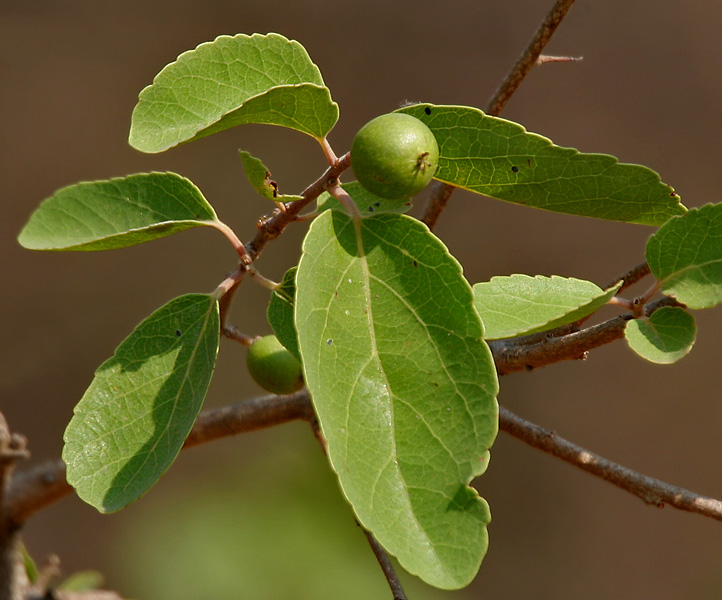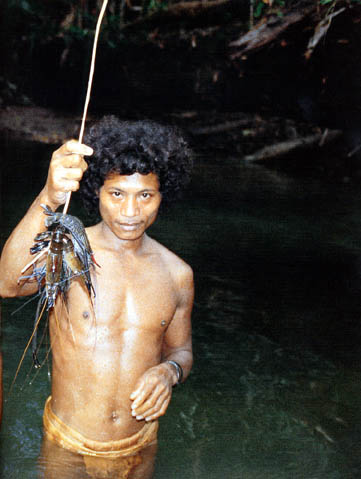|
Pseudosmelia
''Pseudosmelia moluccana'' is a species of shrub or small tree native to Morotai and Halmahera of the Indonesian Maluku Islands and is the only member of the genus ''Pseudosmelia''. Formerly classified in the Flacourtiaceae, phylogenetic analyses based on DNA data indicate that this species, along with its close relatives in the Asian genus ''Osmelia'' and the African genus ''Ophiobotrys'', are better placed in a broadly circumscribed Salicaceae. ''Pseudosmelia'' differs from its close relatives in having thick, truncate staminodes and large, spindle-shaped fruits with numerous seeds. ''Pseudosmelia moluccana'' is known by the common name In biology, a common name of a taxon or organism (also known as a vernacular name, English name, colloquial name, country name, popular name, or farmer's name) is a name that is based on the normal language of everyday life; and is often contra ... "mutingut." References Salicaceae Monotypic Malpighiales genera Salicaceae genera Tax ... [...More Info...] [...Related Items...] OR: [Wikipedia] [Google] [Baidu] |
Osmelia
''Osmelia'' is a genus of flowering plants in the willow family, Salicaceae. ''Osmelia'' includes four species of trees native to Sri Lanka and Southeast Asia. ''Osmelia'' is closely related to the monotypic '' Pseudosmelia'' of Morotai and Halmahera of the Indonesian Maluku Islands and to the monotypic '' Ophiobotrys'' from west and west-central tropical Africa. List of species *'' Osmelia gardneri'' Thwaites *'' Osmelia grandistipulata'' Slooten *'' Osmelia maingayi'' King *'' Osmelia philippina'' (Turcz.) Benth. George Bentham (22 September 1800 – 10 September 1884) was an English botanist, described by the weed botanist Duane Isely as "the premier systematic botanist of the nineteenth century". Born into a distinguished family, he initially studie ... References Salicaceae Salicaceae genera {{Salicaceae-stub ... [...More Info...] [...Related Items...] OR: [Wikipedia] [Google] [Baidu] |
Flacourtiaceae
The Flacourtiaceae is a defunct family of flowering plants whose former members have been scattered to various families, mostly to the Achariaceae and Salicaceae. It was so vaguely defined that hardly anything seemed out of place there and it became a dumping ground for odd and anomalous genera, gradually making the family even more heterogeneous. In 1975, Hermann Sleumer noted that "Flacourtiaceae as a family is a fiction; only the tribes are homogeneous." In Cronquist's classification, the Flacourtiaceae included 79–89 genera and 800–1000 species. Of these, many, including the type genus ''Flacourtia'', have now been transferred to the Salicaceae in the molecular phylogeny-based classification, known as the APG IV system, established by the Angiosperm Phylogeny Group. In the list below, the Salicaceae are circumscribed broadly. Some taxonomists further divide the Salicaceae '' sensu lato'' into three families: Salicaceae ''sensu stricto'', Scyphostegiaceae, and Samyd ... [...More Info...] [...Related Items...] OR: [Wikipedia] [Google] [Baidu] |
Ophiobotrys
''Ophiobotrys zenkeri'' is a species of tree native to tropical Africa from Ivory Coast to Gabon and is the only member of the genus ''Ophiobotrys''. Formerly classified in the Flacourtiaceae, phylogenetic analyses based on DNA data indicate that this species, along with its close relatives in the Asian genera '' Osmelia'' and '' Pseudosmelia'', are better placed in a broadly circumscribed Salicaceae. ''Ophiobotrys'' differs from its close relatives in having 5 sepals, 5(-6) stamens, one divided style, and terminal inflorescences An inflorescence is a group or cluster of flowers arranged on a stem that is composed of a main branch or a complicated arrangement of branches. Morphologically, it is the modified part of the shoot of seed plants where flowers are formed on .... The wood has several uses, and the species is known by several common names, including uolobo, urogbo, abuana, akwana, and bofan. References Salicaceae Monotypic Malpighiales genera Salicaceae gen ... [...More Info...] [...Related Items...] OR: [Wikipedia] [Google] [Baidu] |
Salicaceae
The Salicaceae is the willow family of flowering plants. The traditional family (Salicaceae ''sensu stricto'') included the willows, poplar, aspen, and cottonwoods. Genetic studies summarized by the Angiosperm Phylogeny Group (APG) have greatly expanded the circumscription of the family to contain 56 genera and about 1220 species, including the Scyphostegiaceae and many of the former Flacourtiaceae. In the Cronquist system, the Salicaceae were assigned to their own order, Salicales, and contained three genera (''Salix'', ''Populus'', and '' Chosenia''). Recognized to be closely related to the Violaceae and Passifloraceae, the family is placed by the APG in the order Malpighiales. Under the new circumscription, all members of the family are trees or shrubs that have simple leaves with alternate arrangement and temperate members are usually deciduous. Most members have serrate or dentate leaf margins, and those that have such toothed margins all exhibit salicoid teeth; a sali ... [...More Info...] [...Related Items...] OR: [Wikipedia] [Google] [Baidu] |
Hermann Otto Sleumer
Hermann Otto Sleumer (February 21, 1906 in Saarbrücken – October 1, 1993 in Oegstgeest) was a Dutch botanist of Germany, German birth. The plant genus, genera ''Sleumerodendron'' Virot (Proteaceae) and ''Sleumeria'' Utteridge, Nagam. & Teo (Icacinaceae), are named for him. References 1906 births 1993 deaths Dutch people of German descent People from Saarbrücken 20th-century Dutch botanists {{Netherlands-botanist-stub ... [...More Info...] [...Related Items...] OR: [Wikipedia] [Google] [Baidu] |
Morotai
Morotai Island ( id, Pulau Morotai) is an island in the Halmahera group of eastern Indonesia's Maluku Islands (Moluccas). It is one of Indonesia's northernmost islands. Morotai is a rugged, forested island lying to the north of Halmahera. It has an area of some , including Rao Island which lies to the west of Morotai. It stretches north-south and no more than wide. The island's largest town is Daruba, on the island's south coast. Leo Wattimena Airport is located on the island. Almost all of Morotai's numerous villages are coastal settlements; a paved road linking those on the east coast starts from Daruba and will eventually reach Berebere, the principal town on Morotai's east coast, from Daruba. Between Halmahera and the islets and reefs of the west coast of Morotai is the Morotai Strait, which is about wide. History Morotai was part of the Ternate Sultanate, which was a vassal of the Dutch East India Company by the end of the 17th century. Second World War The Empire o ... [...More Info...] [...Related Items...] OR: [Wikipedia] [Google] [Baidu] |
Halmahera
Halmahera, formerly known as Jilolo, Gilolo, or Jailolo, is the largest island in the Maluku Islands. It is part of the North Maluku province of Indonesia, and Sofifi, the capital of the province, is located on the west coast of the island. Halmahera has a land area of ; it is the largest island of Indonesia outside the five main islands. It had a population of 162,728 in 1995; by 2010, it had increased to 449,938 for the island itself (excluding the tip which is considered part of the Joronga Islands, but including Gebe and Ju islands) and 667,161 for the island group (including all of South Halmahera and Tidore, but not Ternate). Approximately half of the island's inhabitants are Muslim and half are Christian. History Sparsely-populated Halmahera's fortunes have long been closely tied to those of the smaller islands of Ternate and Tidore, both off its west coast. These islands were both the sites of major kingdoms in the era before Dutch East India Company colonized ... [...More Info...] [...Related Items...] OR: [Wikipedia] [Google] [Baidu] |
Maluku Islands
The Maluku Islands (; Indonesian: ''Kepulauan Maluku'') or the Moluccas () are an archipelago in the east of Indonesia. Tectonically they are located on the Halmahera Plate within the Molucca Sea Collision Zone. Geographically they are located east of Sulawesi, west of New Guinea, and north and east of Timor. Lying within Wallacea (mostly east of the biogeographical Weber Line), the Maluku Islands have been considered as a geographical and cultural intersection of Asia and Oceania. The islands were known as the Spice Islands because of the nutmeg, mace and cloves that were exclusively found there, the presence of which sparked colonial interest from Europe in the sixteenth century. The Maluku Islands formed a single province from Indonesian independence until 1999, when it was split into two provinces. A new province, North Maluku, incorporates the area between Morotai and Sula, with the arc of islands from Buru and Seram to Wetar remaining within the existing Maluk ... [...More Info...] [...Related Items...] OR: [Wikipedia] [Google] [Baidu] |
Phylogenetic
In biology, phylogenetics (; from Greek φυλή/ φῦλον [] "tribe, clan, race", and wikt:γενετικός, γενετικός [] "origin, source, birth") is the study of the evolutionary history and relationships among or within groups of organisms. These relationships are determined by Computational phylogenetics, phylogenetic inference methods that focus on observed heritable traits, such as DNA sequences, protein amino acid sequences, or morphology. The result of such an analysis is a phylogenetic tree—a diagram containing a hypothesis of relationships that reflects the evolutionary history of a group of organisms. The tips of a phylogenetic tree can be living taxa or fossils, and represent the "end" or the present time in an evolutionary lineage. A phylogenetic diagram can be rooted or unrooted. A rooted tree diagram indicates the hypothetical common ancestor of the tree. An unrooted tree diagram (a network) makes no assumption about the ancestral line, and does ... [...More Info...] [...Related Items...] OR: [Wikipedia] [Google] [Baidu] |
Common Name
In biology, a common name of a taxon or organism (also known as a vernacular name, English name, colloquial name, country name, popular name, or farmer's name) is a name that is based on the normal language of everyday life; and is often contrasted with the scientific name for the same organism, which is Latinized. A common name is sometimes frequently used, but that is not always the case. In chemistry, IUPAC defines a common name as one that, although it unambiguously defines a chemical, does not follow the current systematic naming convention, such as acetone, systematically 2-propanone, while a vernacular name describes one used in a lab, trade or industry that does not unambiguously describe a single chemical, such as copper sulfate, which may refer to either copper(I) sulfate or copper(II) sulfate. Sometimes common names are created by authorities on one particular subject, in an attempt to make it possible for members of the general public (including such interested p ... [...More Info...] [...Related Items...] OR: [Wikipedia] [Google] [Baidu] |
Monotypic Malpighiales Genera
In biology, a monotypic taxon is a taxonomic group (taxon) that contains only one immediately subordinate taxon. A monotypic species is one that does not include subspecies or smaller, infraspecific taxa. In the case of genera, the term "unispecific" or "monospecific" is sometimes preferred. In botanical nomenclature, a monotypic genus is a genus in the special case where a genus and a single species are simultaneously described. In contrast, an oligotypic taxon contains more than one but only a very few subordinate taxa. Examples Just as the term ''monotypic'' is used to describe a taxon including only one subdivision, the contained taxon can also be referred to as monotypic within the higher-level taxon, e.g. a genus monotypic within a family. Some examples of monotypic groups are: Plants * In the order Amborellales, there is only one family, Amborellaceae and there is only one genus, ''Amborella'', and in this genus there is only one species, namely ''Amborella trichopoda.'' ... [...More Info...] [...Related Items...] OR: [Wikipedia] [Google] [Baidu] |




